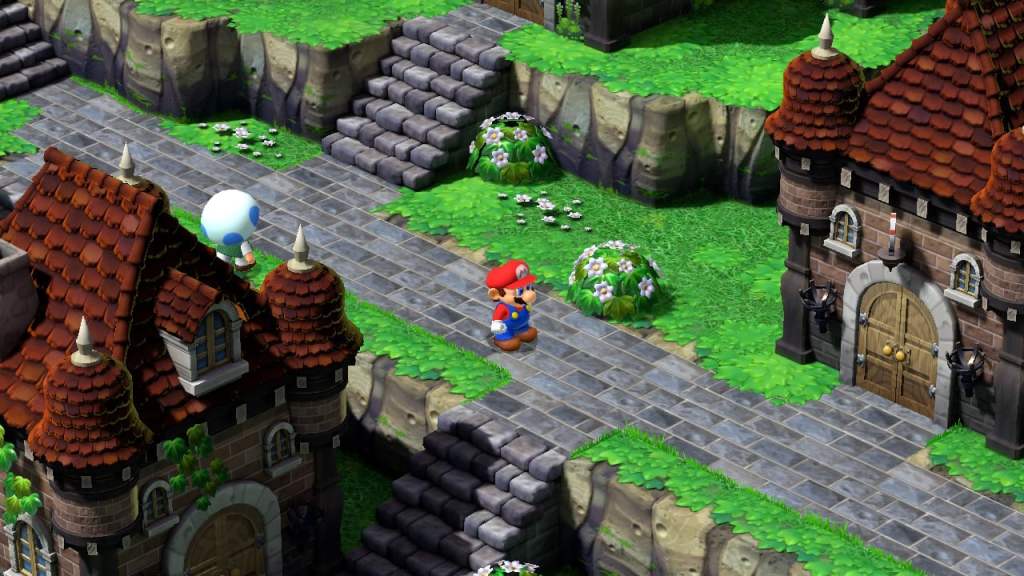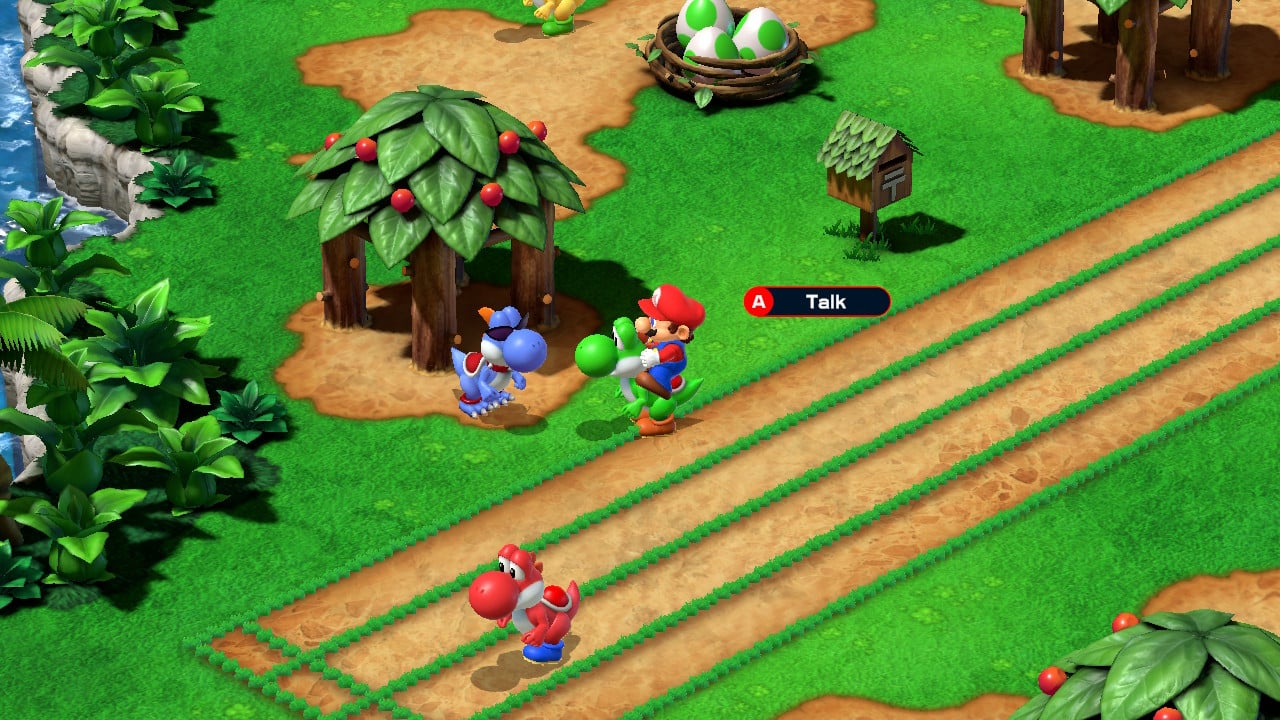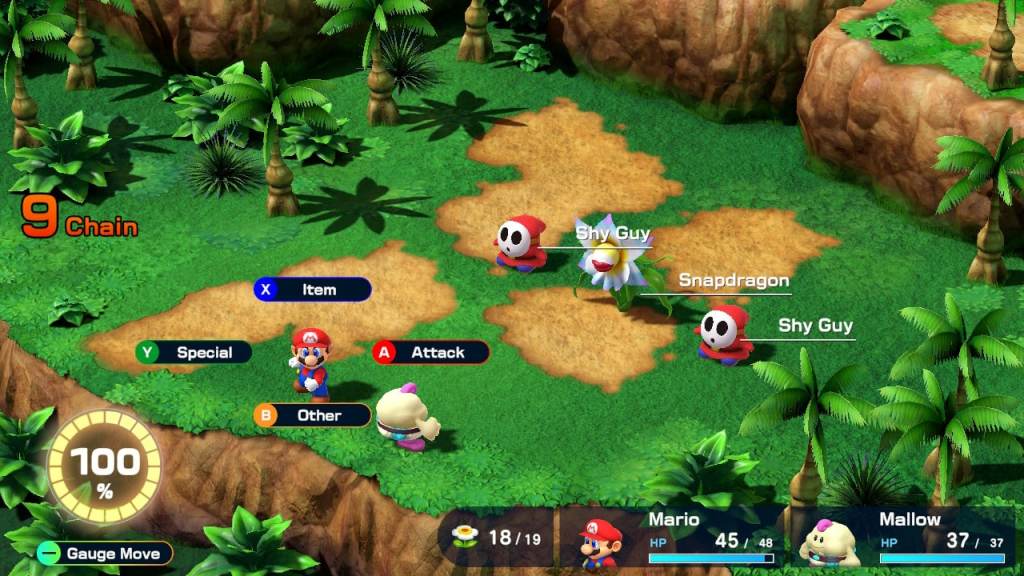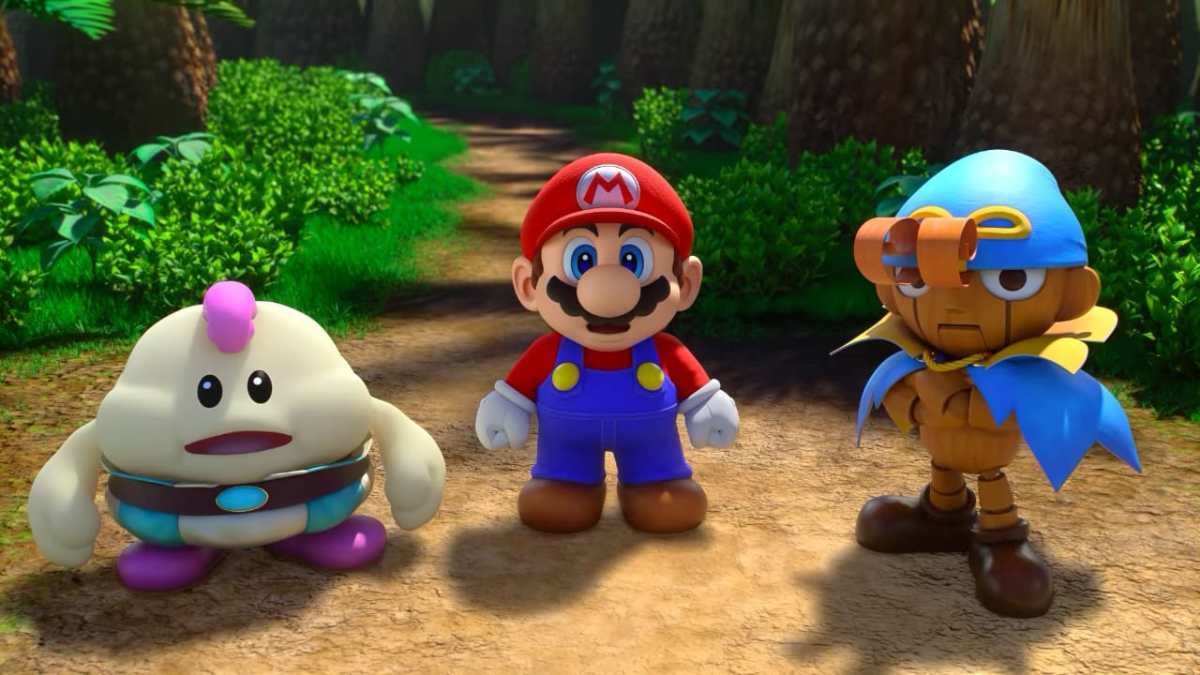The original Super Mario RPG (1996) for the Super
After three hours with the game, and the completion of its first three star challenges, I’m confident this new iteration of Super Mario RPG is a worthy update for one of the most important games in the Super Mario series.
Those who’ve played the original game will find the adventure immediately familiar. This is essentially Super Mario RPG: Legend of the Seven Stars with a fresh lick of paint, in the form of a new ‘chibi’ visual style which injects more vivid colours, and crisper textures into the original game. Grass is pure and green, castles and buildings now have intricate details and brickwork, and character models are more cartoonish and well-defined. It’s the same game, with only minor tweaks (one character has had a name change, for example).
Read: WarioWare: Move It! review – A cavalcade of glorious absurdity

The visual overhaul works wonders to elevate the action of the game, and its strong sense of humour, which has translated very well. The Toads in the Mushroom Kingdom are particularly memorable, with many pulling pranks on Mario, or delivering snappy one-liners that inject the game with a real sense of personality.
There’s also much to say about the game’s physical humour. With Mario rarely speaking, much of his conversations play out in acted form – with his companions Mallow and Geno performing mini-pantomimes to share news and events with other characters. These exaggerated plays – Mario acting out the arrival of a mysterious sword-like enemy named Exor, and the destruction of the powerful Star Road – are delightful, and help to keep the tone of Super Mario RPG balanced.
This is a serious RPG, with high stakes for the Mushroom Kingdom, but it also tells its tale with tongue firmly lodged in cheek, always making sure to pair darker plots with funny little jokes and characters to put some lightness back into the adventure. Dialogue between certain enemies, like Croco and his minions, is particularly light-hearted, with his repeated appearances always drawing a laugh for their silliness.
Beyond the humour, I found a very compelling story laid out in the opening chapters of the game, as Super Mario RPG pulls its action along with a bright tale filled with unique set pieces and puzzles. Its world is segmented into multiple areas, each hiding new plots and potential solutions as the power of Exor grows.

In one corner of the game’s world, you’ll find an entire colony of mole people, and work to save them from the wrath of a puppet-like creature. In another, you’ll meet an entire colony of Yoshis, and race against an evil, cool one named Boshi. Each segment hides a bite-sized challenge, in one form or another.
But the real challenge in Super Mario RPG, and one that reared its head immediately in the game’s opening chapters, is its approach to combat. Battles in Super Mario RPG are turn-based, but with a core twist – they rely on active, well-timed button presses to make the greatest impact.
Once you select an attack, you must pay attention. Each attack can deal greater damage if you press the attack button at just the right second (either indicated by a musical note, or a [!] prompt on screen), and likewise, enemy attacks can be avoided or diminished with the same well-timed press. The challenge here is getting your timing right, because the window for reactions is incredibly small, and requires you to memorise enemy movements for the best results.

There’s a rhythm to these battles that’s difficult to grasp, as it’s reliant on a musical beats and visual cues that require time to understand.
The game’s opening hours featured a difficult learning curve in that regard, as its a unique combat system that demands your attention. So often, I’d get my timing just slightly off, and eat a whopping 20+ damage attack – or, I’d let my mind wander, and accidentally forget to monitor enemy movements on the battlefield.
But the more you practice, and the more familiar enemies you encounter, the more this system begins to feel rewarding. Super Mario RPG is a fairly difficult adventure (though there are now multiple difficulty modes to choose from if you struggle) but mastery of its combat system is key to chopping through enemies with great aplomb.
In my first three hours with the game, it has proved to be a complex, multi-faceted beast, with gorgeous stages revealing a wave of fun bosses, and worlds of unique, vivid personalities. It’s immediately striking – and while its plot feels relatively same-y after years of saving Princess Peach, there are enough clever tweaks and playful writing choices to make the quest feel fresh all over again.
I’m looking forward to continuing my adventures through the Mushroom Kingdom and its surrounds in the coming weeks, and to talk more about the rest of what’s in store. Stay tuned to GamesHub for a full review of Super Mario RPG closer to the game’s release on 17 November 2023.





